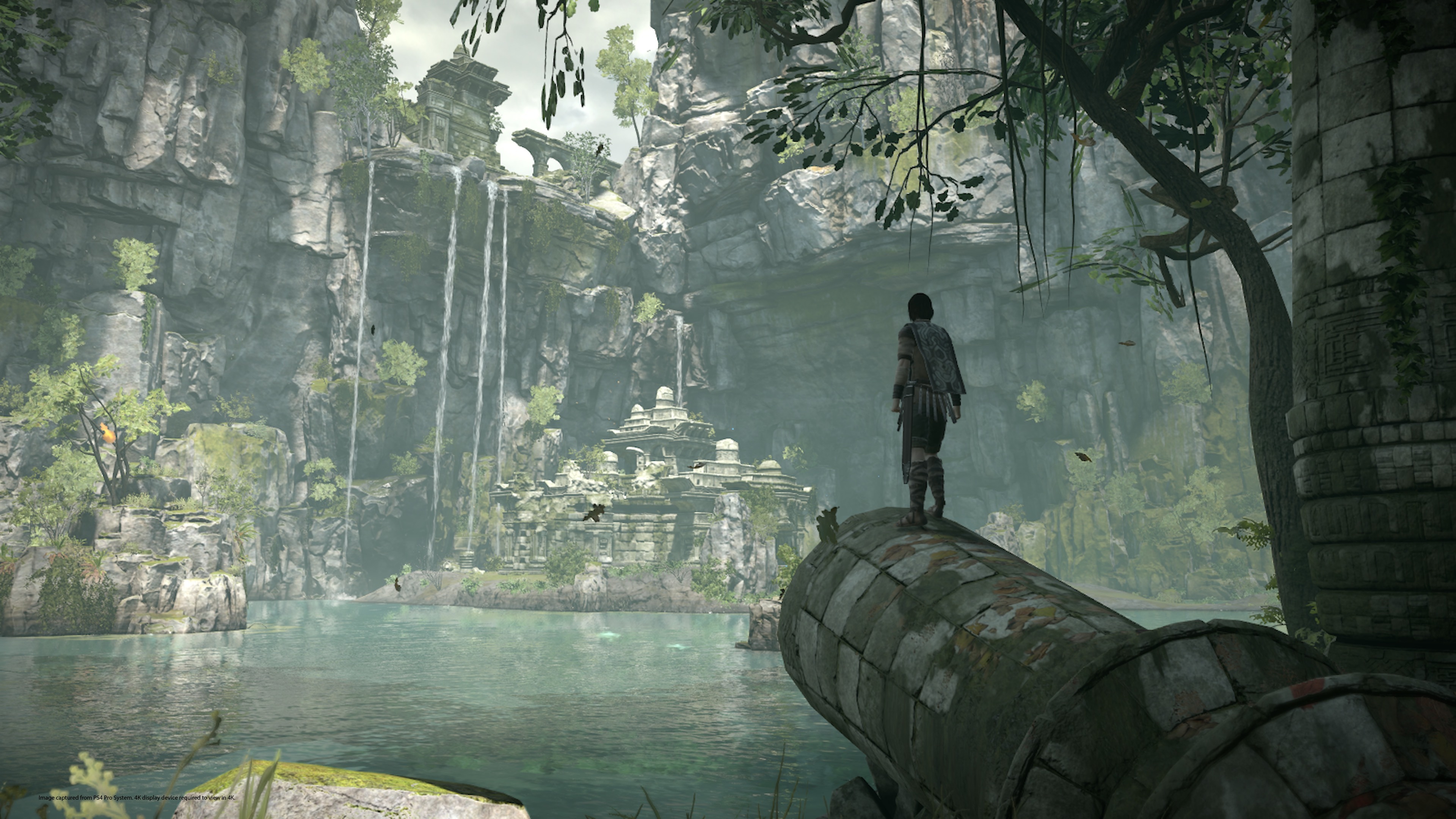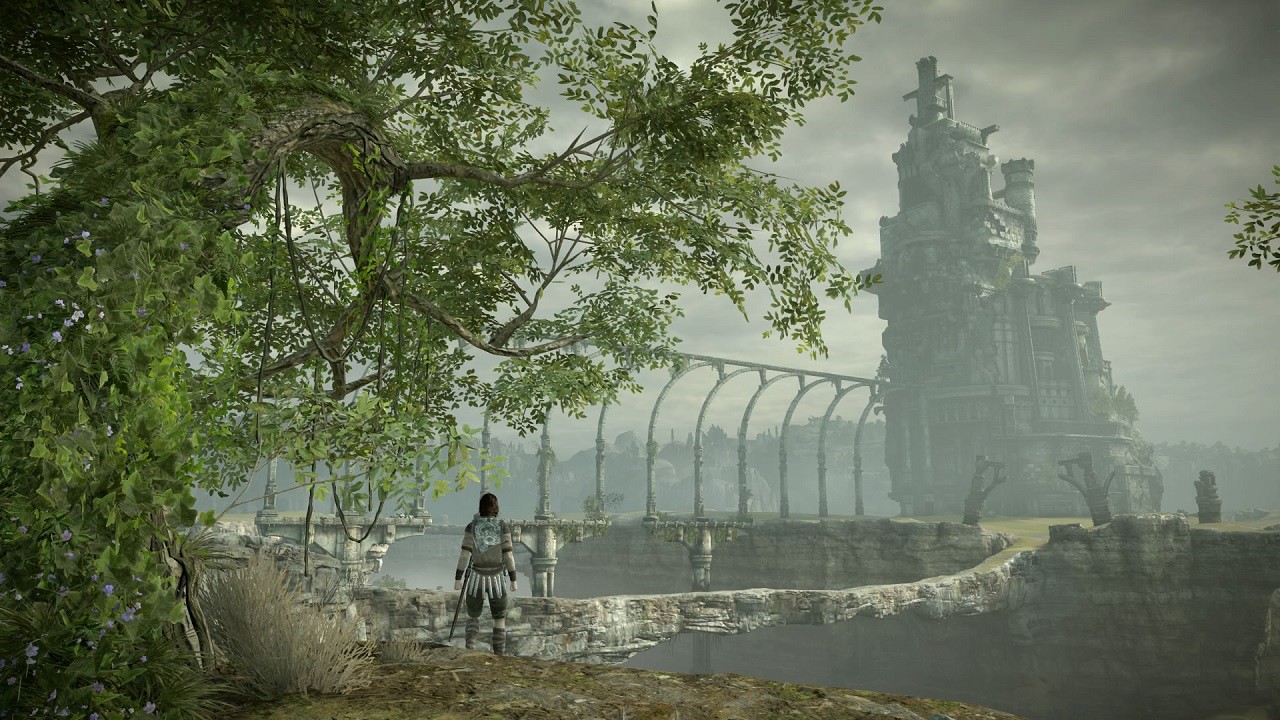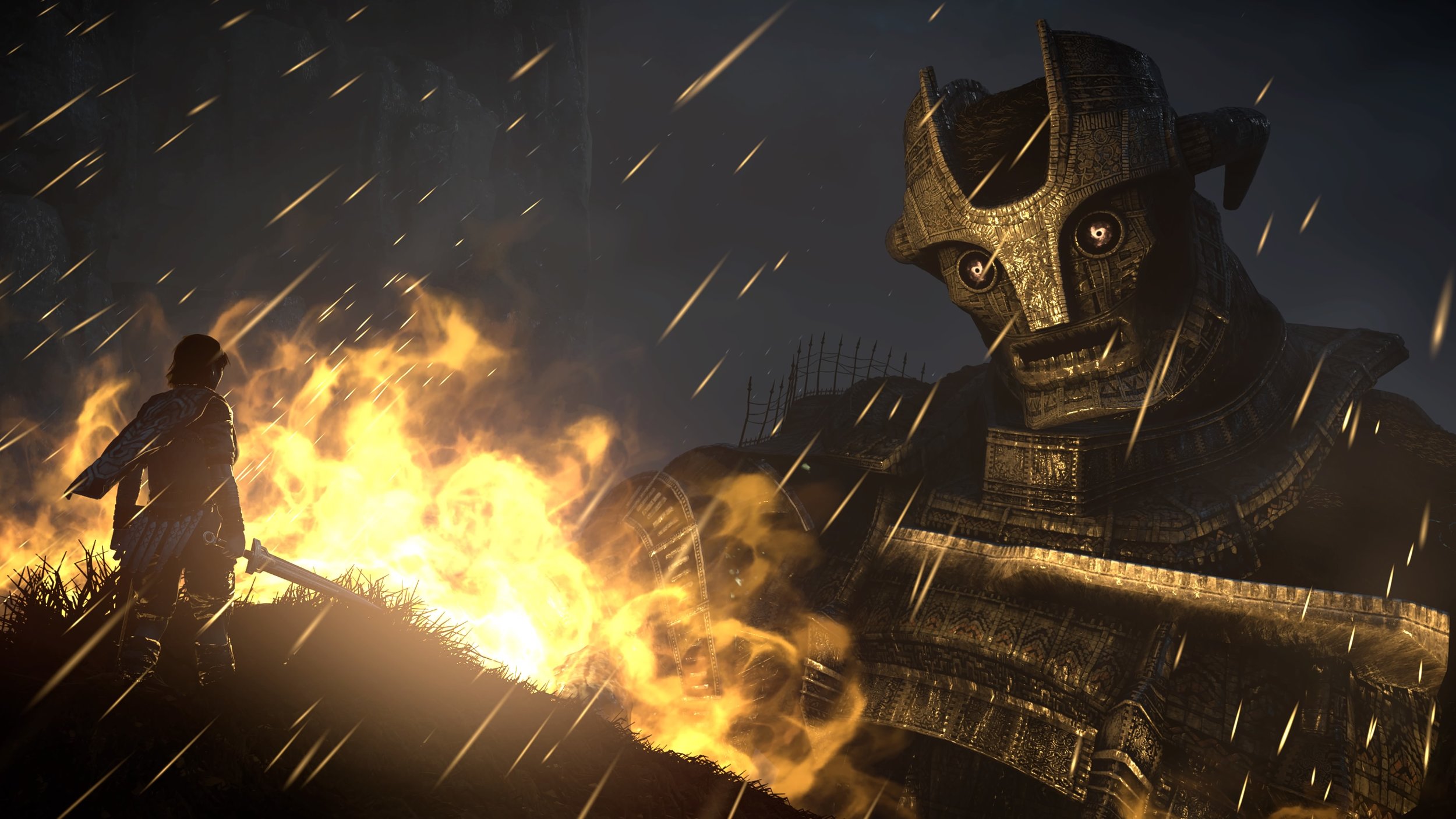The Legend of Zelda and Shadow of the Colossus — Creating Emotional and Awe-Inspiring Experiences
Posted on May 04 2019 by Sean Gadus

If you are plugged in to the video game industry, you’ll hear many discussions about the technical aspects of gaming. Terms like frame rate and anti-aliasing are thrown around often, regardless of whether you have any idea of what they mean. And for the majority of my life, I didn’t have a clue about the technical aspects of gaming. Instead, I respond to specific elements within games: the feeling of beating a boss, the reward of getting a new item, the sense of triumph from seeing the credits roll. As someone who came to video games from a story-telling background (watching films and reading novels), I’ve always come back to the idea of an “experience”. The “experience” of a game relates to the emotions and feelings that a video game can evoke for those who play them.
Since playing Ocarina of Time early in my life, I always felt a special connection to the “experience” created within Zelda games. For me, the developers and designers of the Legend of Zelda franchise have done an excellent job of capturing a unique and powerful “experience”. Through my play time, I developed a connection and fondness for the characters, places, and music from the series. There are very few game series that have better captured or that can better evoke the feeling of being on a journey/adventure than The Legend of Zelda. Hyrule, Termina, Lorule, and the other settings feel lived in, with a spirit and a history that few other games are able to match.
One game that I’ve always felt was the heir to the “experience” created in Zelda games was Sony’s Shadow of the Colossus. Released in 2005 for PlayStation 2, Shadow of the Colossus is focused on exploring a beautiful but lonely open world and on sixteen unmatched boss fights. This gorgeous game, which was recently remade for PlayStation 4, has fascinating similarities with The Legend of Zelda. Both games include a near wordless protagonist, include quests to save young women, and force you to battle incredible enemies. These games create a powerful “experience” that is more than the sum of their mechanical parts, leaving a deep impression on the player long after the credits have rolled. Three critical elements that both The Legend of Zelda and Shadow of the Colossus use to create this powerful impression are: presenting a world with an unspoken history, creating unforgettable bonds with in game companions, and capturing the feeling of overcoming impossible odds.
Part I – Worlds With Unspoken Histories

Both The Legend of Zelda and Shadow of the Colossus brilliantly capture the sense of an in-game world with an unspoken history. Both games take place in worlds that feel like they have thousands of years of history. Much like The Lord of the Rings, there is a feeling that you are entering a world near the end of its long history, as if dozens of civilizations have risen and fallen before your character was born.
Shadow of the Colossus takes place in a (then) massive open world known as “The Forbidden Lands”. This enormous world is filled with beautiful forests, arid deserts, dank caves, and lush lakes and rivers. An enormous, centrally-located fortress known as the Shrine of Worship is visible from all four directions. The world is beautiful but incredibly lonely, with only wildlife to keep the player company. The protagonist, known as “Wander”, has journeyed to this land to bring a maiden (known as Mono) back to life. When playing the game, there is the sense of a place removed from time, preserved or separated from humanity that will help develop the “experience” of the game.
One of the most intriguing things about the game is the crumbling remnants of civilizations scattered across the landscape. Since nearly all of “The Forbidden Lands” is available to the player, you can explore the gorgeous world at your own pace. One of my favorite parts of Shadow of the Colossus was the journey between Colossi (bosses), which gives you time to absorb and explore the landscape presented in the game. There are a variety of structures and ruins littered across the landscape, some of which aren’t on the way to or from any of the Colossi. Late in the game, there are even abandoned cities which serve as massive arenas to battle the Colossi in. Looking at the beautiful and lonely ruins, I began to wonder what happened to the people who lived there and what led to their civilization’s decline. As I explored these structures, I felt like the traveler in Percy Shelley’s “Ozymandias”, who sees remnants of a great civilization, all but grounded into dust. That feeling of being a witness to long gone civilization gives the game a sense of history and mystery that few games can match.

This feeling of exploring a world with a long history is also an important part of the Legend of Zelda series. In Ocarina of Time, locations like The Sacred Forest Meadow (Forest Temple) and The Desert Colossus (Spirit Temple) are massive structures that feel impossibly ancient. There is a sense of age and unspoken history transmitted through the design and texture of the places in Zelda. The enormous Goddess of Sand that is the central carving of the Desert Colossus (both inside and outside) feels like a forgotten deity, one whose worshipers and people have abandoned her. Similarly, the Forest Temple is a literal ghost house, filled with four spirits who have yet to find rest. What events led to their deaths? What was this place before it became haunted. The history of these places feels palpable, and I hope Nintendo chooses to fill in the gaps in Hyrule’s long history.
Like Ocarina of Time, Breath of the Wild is build around a world with a long and seemingly lost history. Link has been asleep for one hundred years and the world has changed radically since his demise. Ruins like The Temple of Time, Akkala Citadel, and The Colosseum feel like they have hundreds of years of unwritten and unspoken history. While the Temple of Time may make the biggest impact on the player because of its long history with the Zelda franchise, all of the structures in Breath of the Wild feel as if they have important but lost roles in the Hylians’ history. When exploring these structures, you wonder: “What happened here?” This wonder and mystery, the feeling of being part of a world with a long history, is essential to making you feel like you are on an adventure in an authentic world.
Part II – Creating Unforgettable Bonds

Both Shadow of the Colossus and The Legend of Zelda require the player to develop important bonds with non-playable characters through both gameplay and narrative structure. In both games, companions will play key roles in the hero’s journey. These characters have a gameplay purpose (fast travel, combat, etc…) and they also serve a role for the protagonists’ story and emotional journey. These bonds help the player become more personally invested in the “experience”.
Shadow of the Colossus is often considered one of the most beautiful but lonely games ever made. Wander, our protagonist, goes through his experience with extremely little contact with other humans beings. He enters The Forbidden Land with a single companion: his horse named Agro. Agro plays an important role as the means of fast travel for the game. The horse is essential to the game, making the journey the sixteen colossi palatable. Without Agro, the game would be incredibly slow and most likely unplayable. Agro plays a role in combat as well. Some of the best battles will feature Wander firing arrows from Argo’s back against supremely dangerous and powerful foes.
Along with his gameplay role, Agro also plays a powerful story role. In this lonely, barren, and often hostile world, Argo is the only companion that Wander can rely on. The horse is an essential part of the progression and journey of the protagonist within the game. This creature is the only living thing in a cold and lonely world that cares for Wander. In this lonely quest, the player and Wander form a close emotional bond with the horse. It’s such a powerful bond that when the horse is taken away late in the game, it’s an unexpected and deeply tragic moment for Wander, who must carry on alone.

Much like Shadow of the Colossus, the Legend of Zelda franchise has included a variety of companions throughout the years. These companions assume gameplay roles in their respective games. For example, Epona, Midna, and King of Red Lions help with transportation and fast travel. These characters make it possible to navigate the massive game worlds, making them essential to the game. Other characters like Navi, Tatl, and Fi assist (or attempt to assist) with combat, tutorials, and direction. Navi was born out of the need for a cursor for Z-Targeting and all of the characters help guide the player through tutorials. These companions have essential gameplay value that helps guide the player and works to improve the flow of the game.
Zelda companions also have a story focus. Twilight Princess‘s Midna may be the best equivalent to Argo. Throughout Link’s long journey in Twilight Princess, our hero’s bond with Midna becomes a primary narrative focus of the game. The character develops from an uneasy ally to a cherished friend. Instead of doing Midna’s bidding, you are fighting alongside the character to save the world. Both Shadow of the Colossus and Twilight Princess force the player endure the possible loss of an important companion, which is devastating for those who have formed a connection with the characters. These powerful connections help create a special “experience” for players, these moments are only formed through the long game play and narrative journeys.
Part III – Achieving The Impossible

The Legend of Zelda and Shadow of the Colossus develop a powerful “experience” by capturing the feeling/emotions of achieving the impossible. One key highlight of the Zelda series are its boss fights, battles with enormous and intimidating enemies. Shadow of the Colossus took the concept of epic boss fights and made it the main focus of the game. While a Zelda game may have puzzles, combat, and as many as eight to twelve boss fights, Shadow of the Colossus includes sixteen awe-inspiring battles. These enemies are among the largest ever created for video games, towering above Wander and able to destroy our hero with a single hit. Both The Legend of Zelda and Shadow of the Colossus use these epic conflicts to highlight some of their most impressive elements and draw out the emotions of the player.
Everyone loves an underdog. Whether it’s in sports, movies, or video games, we all love to see the scrappy hero defy the odds. It’s a concept that The Legend of Zelda and Shadow of the Colossus embrace. The design of the bosses in the Legend of Zelda franchise are meant to intimidate the player. Classics fantasy designs like dragons and arachnids reinforce the idea that these beasts are impossible. These enemies may kill the player several times before we even learn the strategies or skills for defeating them. But when we do defeat them, we have a feeling of euphoria. We have defied the odds and defeated the monster.
One thing that The Legend of Zelda has always succeeded at is embracing the feeling that you are growing in power. You start the game with limited resources and life. As the game continues, you battle progressively more dangerous and powerful foes, growing each time you defeat them. There is a true feeling of triumph each time you succeed in a boss fight, giving you the “experience” of achieving the impossible.
Building off games like The Legend of Zelda, Shadow of the Colossus turns the dial to eleven. Each of the sixteen Colossi are massive creatures, combinations of flesh, earth, and stone. The game is careful to visually illustrate how massive each beast is, panning wide to put Wander in his place among these colossal foes. Using natural forms like horses, eels, crabs, bulls, and birds, along with enormous unnatural humanoid and monstrous figures, the game sets you against foes that are impossibly strong. These sixteen beasts are paragons of boss design: artful, intimidating, and dangerous, a perfect mountain for the player to climb.
And climb you shall. One of the most best mechanics in Shadow of the Colossus is climbing. To defeat each colossus, the player must find ways to climb the beasts and then stab their weak points. There is an incredible tension as your grip meter is dwindling down and you have only another few feet to go. The Colossi aren’t passive either; they shake, rear up, and whip around, battling you in order to survive. It’s an intense experience, one that ends with a complex mix of triumph and sadness as you slay each primordial beasts. Each battle feels like the odds are stacked against you, but each victory makes you believe that the player, and Wander, can achieve the impossible. By creating some of the most powerful and jaw dropping barriers to success, Shadow of the Colossus strengthens the “experience” of the game.

Despite their similarities in approach, the game diverge in the results/take away of Link and Wander’s quests. While Link’s battles are viewed as heroic, Wander’s is more morally complex. Each monster that Link slays helps make Hyrule a better place, as we often see nonplayable characters around Link rejoice after each boss is defeated. Link is the embodiment of courage and heroism. Link is the defender of the innocent and the weak. He is given names like “Hero of Time”, “Hero of Winds” and “Hero of Twlight”. Rarely, if ever, are we given any reason to doubt Link’s moral goodness or the quality of his motivations.
Wander’s quest is far more complex in comparison to Link’s journeys. In many ways, Wander’s quest to bring Mono back to life can be viewed as a deal with the devil. This becomes increasingly clear as Wander progresses in his quest, as our protagonist seems to grow sicker and sicker. By the end of the game, the player can feel the looming sense of tragedy that hangs over Wander. Wander’s quest raises the central question that we all must ask: “At what cost will we achieve the impossible?”. When we seek to do things that have never before been done, we must ask not only the question: “Is it possible,” but also, “Is it right to do this?”. Despite the complexity/culpability of Wander’s action, I never felt the desire to judge or abandon Wander. No matter what, I was willing to see his quest to its end, whether it led to good or evil.
However, as different as these two character arcs are, they still present to the player a powerful “experience.” In both instances, the player can identify with the protagonist, placing themselves in the hero’s shoes and feeling the same emotions — the highest highs and the lowest lows — that the characters experience.
Conclusion
The Legend of Zelda and Shadow of the Colossus are critical achievements in video games. Beautifully designed, both games create an unforgettable “experience”. The games achieve these results by developing a world with an unspoken history, creating a bond with in game companions, and finally, by creating the sensation of achieving victory against impossible odds.

Sean Gadus is a Senior Editor at Zelda Dungeon. His first Zelda game was Ocarina of Time, and he loves all of the 3D Zelda games from 1998-2011. The final battle of Tears of the Kingdom is one of his favorite final battles in the entire series. He wants to help build a kinder, more compassionate world. You can check out his other written work at The-Artifice.com.



